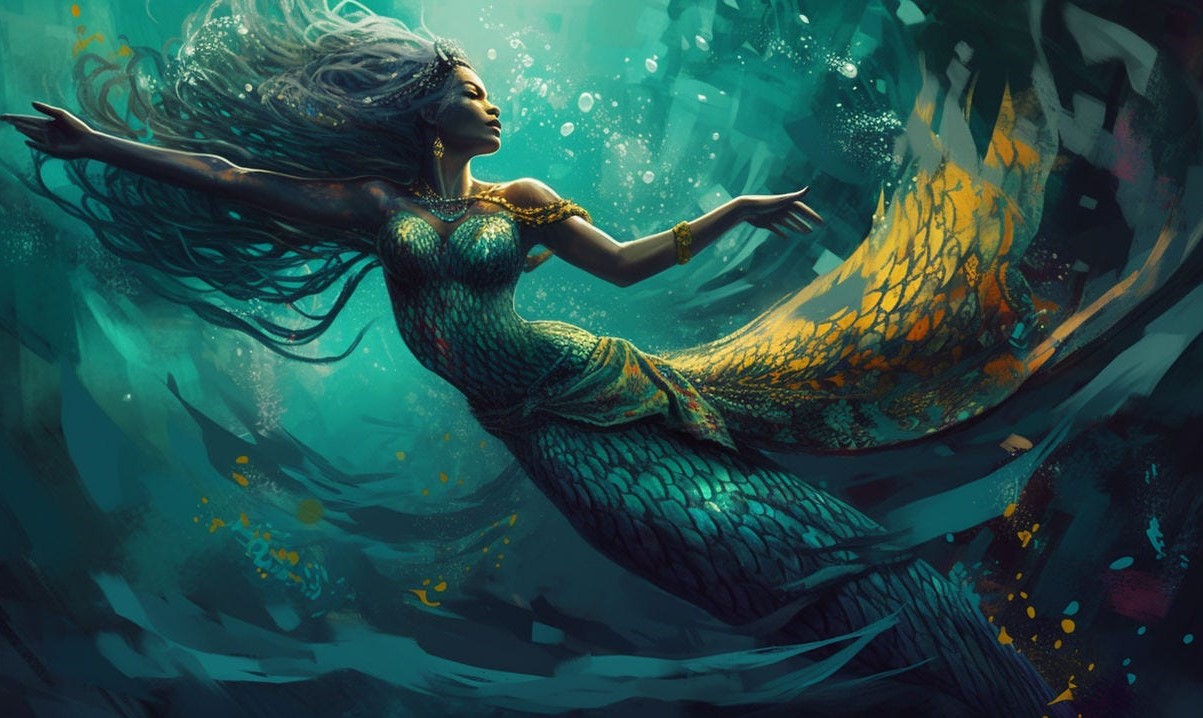
Ever been curious about sirens from mythology? These enchanting creatures have fascinated people for centuries. Originating from Greek myths, sirens are often depicted as beautiful women with mesmerizing voices. But did you know they were originally portrayed as bird-women? Their songs were said to lure sailors to their doom, causing ships to crash on rocky shores. Sirens have evolved in stories over time, sometimes even being confused with mermaids. From ancient texts to modern pop culture, their allure remains strong. Ready to dive into some intriguing facts about these mythical beings? Let's uncover the mysteries of sirens together!
Origins of Sirens
Siren mythology has fascinated people for centuries. These mythical creatures are often depicted as beautiful yet dangerous beings. Let's dive into some intriguing facts about sirens.
-
Greek Mythology: Sirens originate from Greek mythology. They were believed to be the daughters of the river god Achelous and a Muse.
-
Half-Bird, Half-Woman: Early depictions showed sirens as half-bird, half-woman creatures. This combination symbolized their enchanting yet deadly nature.
-
Island Dwellers: Sirens were said to live on rocky islands. Sailors passing by would hear their irresistible songs and steer their ships toward danger.
Sirens and Their Songs
The sirens' songs are legendary. They were known to lure sailors to their doom with their enchanting voices.
-
Irresistible Melodies: The songs of sirens were so captivating that sailors couldn't resist them. This often led to shipwrecks on rocky shores.
-
Odysseus' Encounter: In Homer's "Odyssey," Odysseus encounters sirens. He orders his men to plug their ears with beeswax and ties himself to the mast to avoid their lure.
-
Symbol of Temptation: Sirens symbolize temptation and the dangers of giving in to it. Their songs represent the allure of the unknown and the peril it can bring.
Transformation Over Time
The image of sirens has evolved over centuries. Different cultures have added their own twists to the myth.
-
Medieval Interpretations: During the medieval period, sirens were often depicted as mermaids. This shift reflected changing views on beauty and danger.
-
Renaissance Art: In Renaissance art, sirens were portrayed as beautiful women with fish tails. This imagery persists in modern depictions of mermaids.
-
Modern Pop Culture: Today, sirens appear in various forms of media, from books to movies. They continue to captivate audiences with their blend of beauty and danger.
Sirens in Literature
Sirens have left a lasting mark on literature. Their stories have been told and retold through the ages.
-
Homer's "Odyssey": The most famous literary reference to sirens is in Homer's "Odyssey." This epic poem has influenced countless other works.
-
"The Sirens of Titan": Kurt Vonnegut's novel "The Sirens of Titan" uses sirens as a metaphor for the allure of space exploration and the unknown.
-
"The Little Mermaid": Hans Christian Andersen's "The Little Mermaid" features a mermaid who sacrifices everything for love. This story draws on siren mythology.
Sirens in Art and Music
Sirens have inspired artists and musicians for centuries. Their allure and danger make them compelling subjects.
-
Classical Art: Ancient Greek pottery often depicted sirens. These artworks show the dual nature of sirens as both beautiful and deadly.
-
Operas and Ballets: Sirens have appeared in operas and ballets. Their enchanting songs and tragic tales make for dramatic performances.
-
Modern Music: Contemporary musicians have also drawn inspiration from sirens. Songs and albums often explore themes of temptation and danger.
Sirens in Different Cultures
While sirens originate from Greek mythology, similar creatures appear in other cultures.
-
Slavic Rusalki: In Slavic folklore, rusalki are water nymphs who lure men to their deaths. They share many traits with sirens.
-
Japanese Ningyo: Japanese mythology features ningyo, mermaid-like creatures. Eating their flesh was said to grant immortality, but they were also considered omens of disaster.
-
African Mami Wata: Mami Wata is a water spirit in African folklore. She is often depicted as a mermaid and is associated with both beauty and danger.
Timeless Allure of Sirens
Siren mythology has fascinated people for centuries. These mythical creatures, often depicted as beautiful yet dangerous, have inspired countless stories, songs, and artworks. Their enchanting voices and mysterious nature make them enduring symbols of temptation and peril.
From ancient Greek tales to modern pop culture, sirens continue to captivate our imaginations. They remind us of the power of allure and the dangers that can come with it. Whether seen as malevolent beings or misunderstood figures, sirens hold a unique place in mythology.
Understanding siren myths offers a glimpse into human nature and our fascination with the unknown. These stories serve as cautionary tales, urging us to be wary of what seems too good to be true. Sirens, with their timeless allure, will likely remain a captivating part of our cultural fabric for generations to come.
Was this page helpful?
Our commitment to delivering trustworthy and engaging content is at the heart of what we do. Each fact on our site is contributed by real users like you, bringing a wealth of diverse insights and information. To ensure the highest standards of accuracy and reliability, our dedicated editors meticulously review each submission. This process guarantees that the facts we share are not only fascinating but also credible. Trust in our commitment to quality and authenticity as you explore and learn with us.


